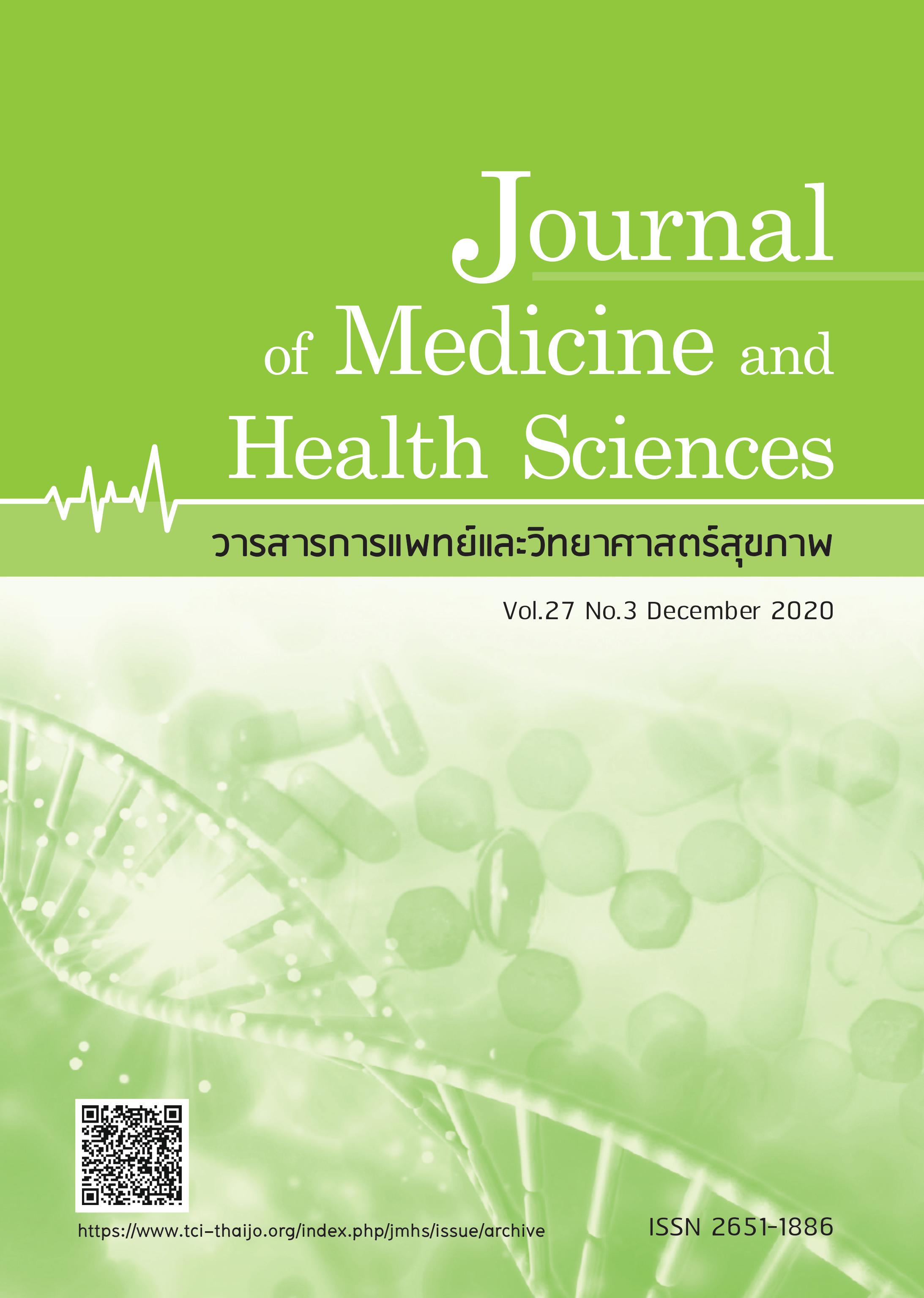Anti-cancer effect of Moringa oleifera leaf extract on squamous cell carcinoma 15 cells
Keywords:
Moringa oleifera Lam., squamous cell carcinoma 15 cells, apoptosisAbstract
Abstract
Moringa oleifera Lam. is widely cultivated in tropical area for food source. Moreover, it has anti-inflammation, antioxidant, anti-bacterial and anti-cancer properties. Cancer is the first cause of death in Thailand including lung cancer, liver cancer, breast cancer and head and neck cancer respectively. In this study, we aimed to investigate the anti-cancer property of Moringa oleifera Lam. leaf extract on head and neck cancer cell line using squamous cell carcinoma (SCC) 15 cells. M. oleifera leaves crude hexane extract were tested with SCC15 cells and human macrophages by cytotoxicity assay. A five percent inhibitory concentration (IC5) of macrophages was used to evaluate the anti-cancer activity on SCC15 cells. Cell apoptosis were anayzed by Muse™ Annexin V and Dead Cell Kit. Results showed that the extract could significantly induce cancer cell apoptosis same as cisplatin compare to untreated control (p<0.05). In conclusion, result suggested that M. oleifera leaf extracts potentially have anti-cancer property on SCC15 cells. Thus, it should be further identified the bioactive compounds and elucidate the mechanism of anti-cancer activity. The findings imply that M. oleifera leaf extract is anti-cancer effect which might develop a new drug for head and neck cancer.
References
2. Aggarwal BB , Surh YJ, Shishodia S, editors. The molecular targets and therapeutic uses of curcumin in health and disease. New York: Springerlink; 2007.
3. Kang Zi Khor, Vuanghao Lim, Emmanuel J Moses, et al. The in vitro and in vivo anticancer properties of Moringa oleifera. Evid Based Complement Alternat Med
2018;14:1071-243.
4. Al-Asmari AK, Albalawi SM, Athar MT, et al. Moringa oleifera as an anti-cancer agent against breast and colorectal cancer cell lines. PloS one 2015;10:814.
5. Minirtry of Public health. Public health statistic A.D. 2017. Nontaburi: Minirtry of Public health; 2018.
6. Ferlay J EM, Lam F, Colombot M, et al. Bray F Global cancer observatory: Cancer today Lyon, France. International Agency for Research on Cancer 2018. [Internet].
2018 May [cited 2019 May 10]. Available form: http://goc.iarc.fr/today/fact-sheetspopulations.
7. Hashibe M, Brennan P, Benhamou S, et al. Alcohol drinking in never users of tobacco, cigarette smoking in never drinkers, and the risk of head and neck cancer: Pooled
analysis in the International head and neck cancer epidemiology consortium. J Natl Cancer Inst 2007;99:777-89.
8. Cristiana Lo Nigro, Nerina Denaro,Anna Merlotti, et al. Head and neck cancer: improving outcomes with a multidisciplinary approach. Cancer Manag Res 2017;9:363-71.
9. Wyss A, Hashibe M, Chuang S-C, et al. Cigarette, cigar, and pipe smoking and the risk of head and neck cancers: pooled analysis in the International head and neck cancer epidemiology consortium. Am J Epidemiol 2013;178:679-90.
10. Cancer Institute NSW Australian Technology Park: Cancer Institute NSW. Cancer treatment side effects: A guide for Aboriginal Health Workers. Cancer
Institute NSW; 2015.
11. Jung IL. Soluble extract from Moringa oleifera leaves with a new anticancer activity. PloS one 2014;9:954-92.
12. Li Q, Wen J, Yu K, et al. Aloe-emodin induces apoptosis in human oral squamous cell carcinoma SCC15 cells. BMC Complement Altern Med 2018;18:296.



